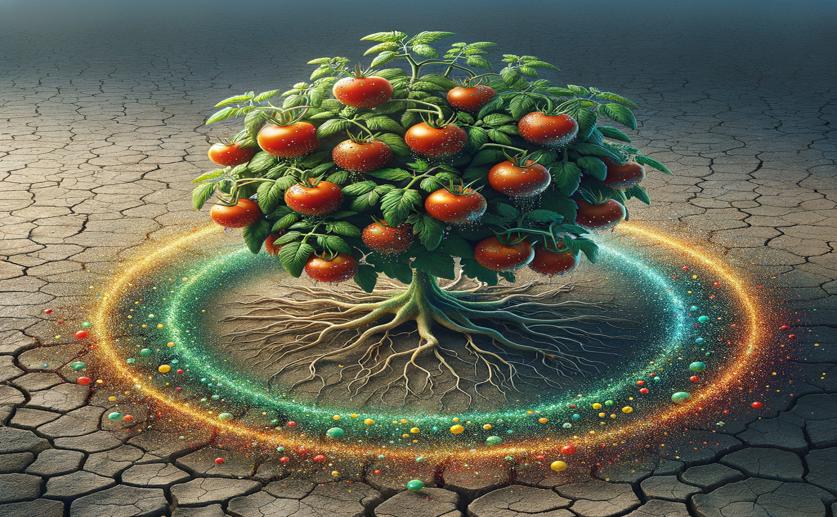
Sodium Nitroprusside Helps Tomato Plants Manage Stress from Drought
Greg Howard
29th May, 2024

Image Source: Natural Science News, 2024
Key Findings
- The study from Harran University explored how sodium nitroprusside (SNP) can help tomato plants cope with drought stress
- Drought stress significantly reduced plant growth, chlorophyll content, photosynthetic efficiency, and water content, while increasing stress markers like hydrogen peroxide and proline
- SNP treatment reduced oxidative stress markers and increased nitric oxide and hydrogen sulfide levels, enhancing the plant's stress response and antioxidant capacity
AgricultureBiochemPlant Science
References
Main Study
1) Sodium nitroprusside modulates oxidative and nitrosative processes in Lycopersicum esculentum L. under drought stress.
Published 28th May, 2024
https://doi.org/10.1007/s00299-024-03238-3
Related Studies
2) Exogenous nitric oxide requires endogenous hydrogen sulfide to induce the resilience through sulfur assimilation in tomato seedlings under hexavalent chromium toxicity.
3) Exploring the Potential of Nitric Oxide and Hydrogen Sulfide (NOSH)-Releasing Synthetic Compounds as Novel Priming Agents against Drought Stress in Medicago sativa Plants.
Journal: Biomolecules, Issue: Vol 10, Issue 1, Jan 2020
4) NO, hydrogen sulfide does not come first during tomato response to high salinity.
5) Proline-stimulated signaling primarily targets the chlorophyll degradation pathway and photosynthesis associated processes to cope with short-term water deficit in maize.



 27th May, 2024 | Greg Howard
27th May, 2024 | Greg Howard